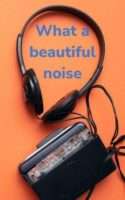Music has been my companion from a young age. All my life I have been surrounded by music lovers, who listened to different genres, so it is not by chance that I have an eclectic ear. I have memories of listening to Zim Ngqawana and the late great Mduduzi Mandoza Tshabalala. Being exposed to music from a young age has made me see how music in South Africa has changed over the years; and yet remains the same.
In the 1980s, legends like Miriam Makeba, Hugh Masekela, and Zim Ngqawana all sang against the apartheid State. They sang songs of struggle, and songs of comfort. They sang songs that reflected their reality and that of millions of South Africans.
But as South African comedian and host of The Daily Show, Trevor Noah, would joke, apartheid lasted so long because people thought we were having fun; because of our beautiful harmonies and rhythm. Music changed in the 80s with the rise of disco – the Brenda Fassie era, along with Chicco Twala. Their music still reflected their realities, just with a different rhythm and bounce.
Then came the era of kwaito; and you can’t talk kwaito without mentioning the likes of Arthur Mafokate, Mdu Masilela, Mandoza, Brown Dash and TKZE. The 90s and the early 2000s were their time. Songs like “Respect Life” by Mandoza, spoke to a different struggle post-apartheid. A new wave of music that was originally South African and had no competition in the ears of the youth. The kwaito era not only took over the sound waves, but spawned a new phenomenon in fashion too. Amagrotman were in a chokehold by Dickies and Converse, you could tell who was a kwaito head by just looking at them. But like all music fashions, kwaito was phased out.
Replacing it were the commercial and deep house era. Buju Muju was the leader of the pack in commercial house with his still beloved hit “Summer Rain” – one of my all-time favourite songs. Deep house, led by Vinny and Christos – and soon internationally acclaimed DJ Black Coffee – took over, and paved the way for tribal deep with the likes of Da Capo, Shimza and ProblemChild.
We are now in the peak of a new musical era, amapiano. Amapiano is said to originate from South Africa’s capital, Pretoria – some say Katlehong. The person credited with the rise of amapiano is Kabza De Small. The amapiano genre may be new, but it has elements from all the genres that preceded it. It has a heavy bassline from the kwaito era, and as the genre’s name suggests, more of its melodies are piano based – like the jazz that once ruled the country’s dance floors. Amapiano also has almost the same beat tempo as deep house, with percussion influence coming from tribal deep.
Music has changed yet much remains the same because it has been an evolution of what was to what is. Music artists still reflect the needs of their generation. Amapiano reflects our struggles with unemployment and forever hustling, as is portrayed in the Kabza De Small song “Nana Thula” and our optimism for the future in Young Stunna’s “Adiwele”.
***
Tell us: What is your favourite South African music genre?
If you enjoyed this piece, you may also like how music can heal.



